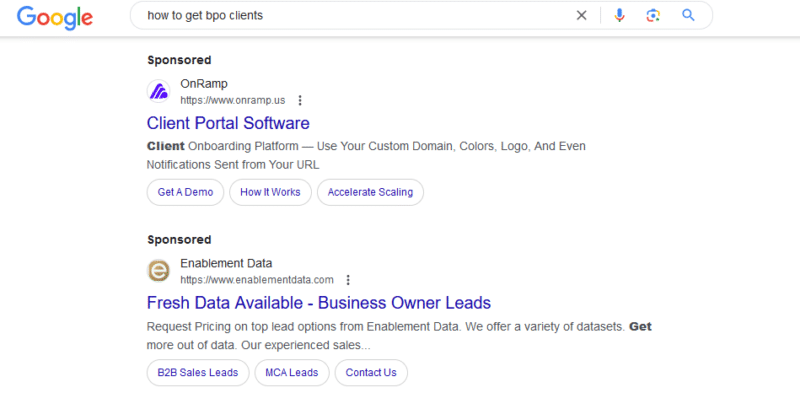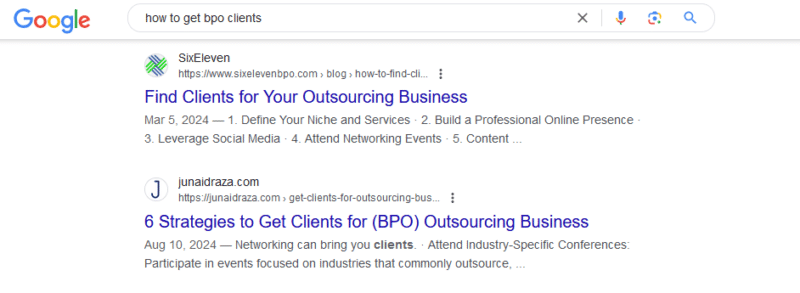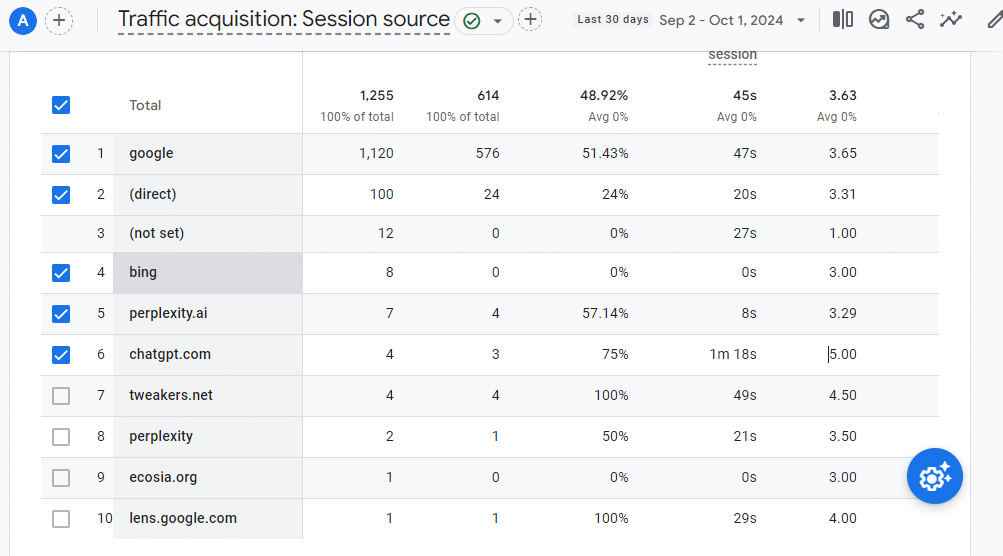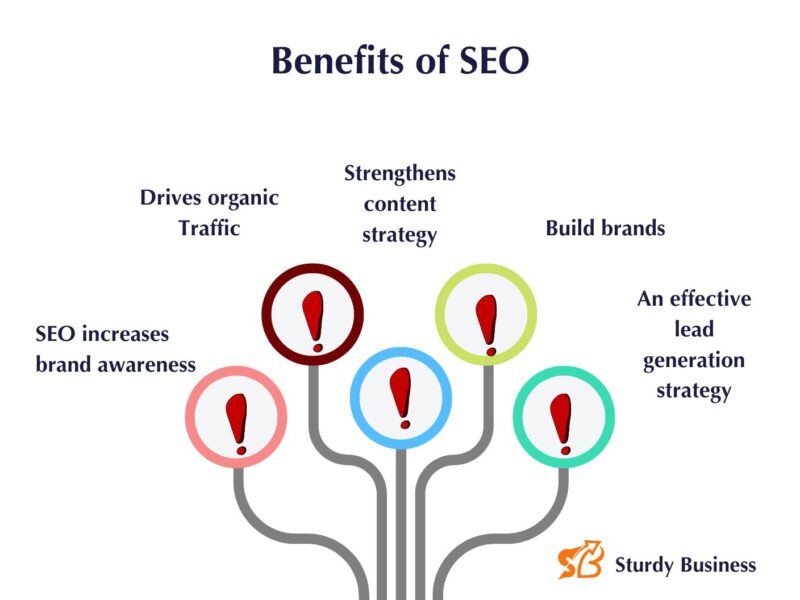You may have heard that SEO is one of the most effective inbound marketing strategies, and now you’re wondering if it can help your business grow.
If you’re new to digital marketing, you probably have many questions, such as: What exactly is SEO? How does it work? How can it help you consistently drive inbound leads? How long does it take to see results?
Or perhaps you’re wondering if SEO is a good fit for your business model—whether you’re marketing a SaaS, e-commerce, service-based business, or any other B2B or B2C model.
No matter your reason for exploring SEO, we’ll cover everything in detail—from its definition and process to its importance and best practices—so you can understand how to use it effectively for your business
SEO stands for Search Engine Optimization.
In simple terms, SEO is the process of optimizing web pages, such as your product or service page, to enhance its online visibility. The goal is to ensure that your page appears organically in search engine results when people are looking for products, services, or information related to your offer.
Before we delve deeper, it’s important to distinguish SEO from SEA (Search Engine Advertising). Some business owners confuse the two.
On this page
SEO vs. SEA (also known as PPC):
SEA (Search Engine Advertising) also targets top positions on search engines for specific keywords, but it involves paid search. In SEA, you bid for keywords to secure a spot at the top of search results. This method drives paid traffic to your website, and you pay per click (PPC).
Here is an example of a keyword that I am targeting to drive traffic to my personal brand. The ads with sponsored tags are paid results.

On the other hand, SEO is a content marketing strategy that focuses on optimizing your webpage to provide the best value for users and to align with search engine guidelines, without paying for clicks. By improving your site’s relevance and quality, SEO helps your webpage appear in the top search results organically.
For instance, my page is organically ranking for the same keywords on the first page. So, I don’t need to pay for clicks.

For example, consider this case. I began working on this website, which is now attracting hundreds of organic visitors from major search engines, including Google, Bing, Baidu, and others like Perplexity and ChatGPT.

Currently, the site receives over a thousand visitors each month due to its recent launch. However, as the site continues to grow and gain traction, the organic traffic will increase accordingly. Some websites get millions of free traffic from Google and other search engines with SEO.
This illustrates how SEO can be one of the most cost-effective digital marketing strategies, offering long-term benefits and substantial returns on investment.
Whether you’re focused on B2B or B2C, the primary goal of SEO is to drive targeted traffic organically to your website. This helps improve your online visibility, whether your aim is brand awareness, lead generation, or increasing sales.
Importance of SEO in Digital Marketing

The significance of SEO in digital marketing cannot be overstated. It serves as a foundational pillar that underpins successful online visibility and engagement.
Here are the reasons why SEO is important for businesses:
SEO increases brand awareness:
Brand awareness is a critical objective for businesses, and SEO plays a pivotal role in achieving this goal.
Where millions of websites compete for online visibility, SEO acts as a guiding force. By optimizing key elements of your website, you improve its ranking on search engine results pages (SERPs), increasing the likelihood that your targeted audience will discover the relevant information, products, or services you offer.
This enhanced visibility places you ahead of the curve and amidst your industry peers on the SERP, boosting your brand’s recognition.
Aids in lead generation:
SEO isn’t just about visibility; it’s also crucial for sustainable traffic growth, which can significantly impact lead generation.
As more potential customers find your website organically, you have increased opportunities to generate leads by providing them with valuable content and offers.
For instance, if you are utilizing a marketing funnel with content targeted at different stages—Tofu (Top of Funnel), Mofu (Middle of Funnel), and Bofu (Bottom of Funnel)—you can use Bofu content to directly sell your services.
Meanwhile, visitors who engage with Tofu or Mofu content can be nurtured through the sales funnel, allowing you to build relationships and potentially convert them into customers in the future.
Boosts business credibility:
Studies show that 81% of shoppers search online before making a purchase. When your website ranks well on search engines and has strong brand positioning, it significantly enhances your brand’s credibility and trustworthiness.
Trust is a cornerstone of successful online interactions. A higher search engine ranking not only increases visibility but also fosters a perception of reliability and authority among users. This improved trust can lead to higher engagement, better conversion rates, and a stronger overall reputation for your brand.
Strengthens content strategy:
SEO techniques guide the creation of content that resonates with your target audience, leading to higher engagement, longer dwell times, and increased conversions.
SEO helps in building brands:
As we dig deeper, we realize that SEO is one of the most powerful tools of digital marketing, and it’s worth investing in whether it’s B2B or B2C.
When competing with billions of web pages to rank your website on Google and other search engines, you need to focus on various aspects to ensure your site meets the criteria that search engines use to present results.
This involves optimizing your website’s UI/UX (user interface/user experience), establishing a compelling value proposition, and building domain authority to enhance trust and credibility.
Additionally, ensuring your site is fast and meets core web vitals is crucial for improving performance and user satisfaction. In essence, effective SEO strategies provide a significant opportunity to build your brand, enhance visibility, and differentiate yourself in the competitive online market, leading to sustained success and growth
How search engines work:
To understand why certain pages appear at the top of search results, it’s important to grasp the basics of how SEO works.
At its core, SEO involves three key stages: crawling, indexing, and ranking.
- Crawling: Search engines use automated systems called crawlers or spiders to explore the web and discover new content. These crawlers navigate through links to find and access web pages.
- Indexing: Once a webpage is discovered, it is analyzed and stored in a database known as the index. This index is essentially a giant repository of all the content that search engines consider relevant.
- Ranking: When a user performs a search, search engines use complex algorithms to determine which pages are the most relevant and authoritative for the query. Pages are ranked based on numerous factors, including content quality, keyword relevance, and user experience.
Effective SEO aims to enhance a website’s visibility by aligning it with search engine guidelines. By following these guidelines, websites can improve their chances of appearing higher in search results, leading to increased traffic and potential business opportunities.
Optimizing for success: How SEO professionals drive rankings and traffic
Now let’s explore how SEO professionals make web pages stand out and appear on the first page for relevant queries.
Here are 4 pillars of successful SEO.
- Keyword research
- On-Page SEO (optimizing content)
- Off-Page SEO (link building)
- Technical SEO (enhancing the website’s technical performance)
Keyword research:
Keyword research is the process of identifying the words and phrases (known as keywords) that people commonly use in search engines to find products or services related to your business.
If you don’t target relevant keywords, it will become increasingly difficult to present your website to your audience. For instance, while writing content about your business trips and tours can be useful in some cases, it may not help you rank well in search engines.
That’s why finding these opportunities and optimizing your web pages for those keywords is essential; it is the first crucial step to SEO success.
Fortunately, there are many free tools available to help you find keywords, with the best ones being Google Keyword Planner and Google Suggested Keywords.
Google Keyword Planner is available in your AdWords account, where you manage SEA (Search Engine Advertising). However, you can also use the Keyword Planner tool for SEO purposes, and it is free.
Secondly, think about how people might search for your product or service. Enter those terms into Google, and you will see suggested terms and phrases; this is also a free keyword research method.
Other free tools you can use include Bing Keyword Planner, Ahrefs, Semrush, The Hoth, and more.
On-Page SEO:
It’s part of SEO where we make on-page and on-site changes to make it appear on Google and other search engines.
In this part, you have to optimize web pages for the keywords you found to align with search engine algorithms.
To do this, you optimize the title tag, URL, content, headings, and anchor texts. You also optimize for LSI keywords to help search engines easily understand your content.
Additionally, you make sure that you satisfy keyword intent and also establish credibility and trust. If you want to learn more, you can check this on-page SEO checklist.
Technical SEO:
Technical SEO is also an on-site SEO process. It ensures a website functions well for users and search engines. It focuses on speed, mobile-friendliness, and responsive design.
XML sitemaps and robot text files guide search engine crawlers.
Attention to these technical aspects improves usability and search engine crawlability.
Off-Page SEO:
This is an off-site SEO process. It builds website credibility by acquiring backlinks.
Trustworthy relevant inbound links indicate a reliable site, boosting reputation and rankings. Social signals such as likes and shares amplify content reach, impacting search engine performance.
Reputation management, including proactive reviews, also enhances trust.
Overall, SEO increases search engine visibility, and its facets—On-Page, Off-Page, and Technical—are integral to achieving this goal.